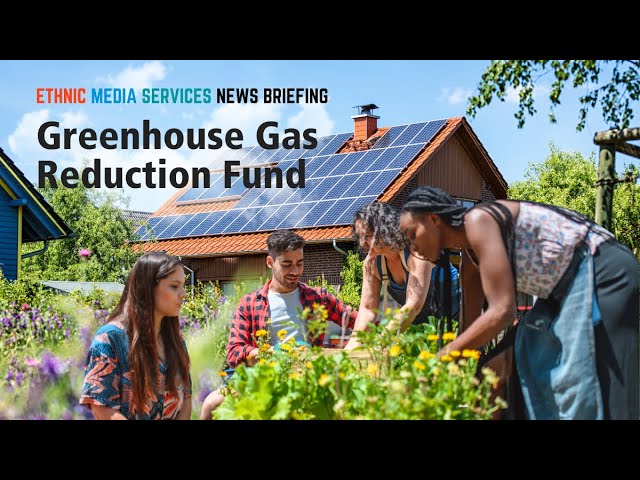Vidya Sethuraman
India Post News Service
It’s the largest-ever infusion of federal funds in clean energy and climate crisis, with the lion’s share 40% of $27 billion earmarked for communities that bear the higher per capita energy costs and are overburdened by pollution. A panel of experts and local stakeholders examined the GGRF in-depth and explained how this historic investment can reduce household energy costs and uplift working-class and poor communities.
David Widawsky, Director of the Greenhouse Gas Emissions Reduction Fund Office of the U.S. Environmental Protection Agency (EPA), said that the GGRF is part of the “Reducing Inflation Act” passed in 2022 and aims to solve the United States’ pressing energy and climate challenges through financial support. The primary goal of the fund is to solve the climate crisis in the United States. Another important goal is to reduce energy costs. The GGRF funding allocation is divided into three parts, including the $14 billion National Clean Investment Fund, the $7 billion Solar for All project, and the $6 billion Clean Communities Investment Accelerator project. These grants have been allocated to 68 entities across the country, enabling the promotion of various renewable energy projects to help low-income and disadvantaged groups gain access to relevant resources, thereby reducing household energy costs, improving health and improving the living environment.
Shalanda H. Baker, Vice Provost for Sustainability and Climate Action at the University of Michigan, analyzed the impact of GGRF on American society and economy. Baker pointed out that according to the Energy Information Administration, about one-third of American households are facing the problem of “energy insecurity” and must make difficult choices between paying energy bills and daily living expenses every month. She further explained that when temperatures are extreme, many low-income families have to turn off their air conditioners to save on energy costs, which poses a serious threat to health. Data shows that 52% of African-American households face the pressure of excessive energy burden, and 47% of Hispanic households are in a similar predicament. In response to this unfair energy distribution phenomenon, the GGRF fund was established to help low-income families, reduce the burden on disadvantaged groups in the energy field, and create more opportunities for them to participate in the clean energy transition.
Baker emphasized that there are also structural inequalities in the promotion of clean energy. For example, white households at the same income level are more likely to install solar systems than African-American households, highlighting stark racial disparities. One of GGRF’s core goals is to break down this inequity and ensure that all communities, especially communities of color, have equal access to the benefits of clean energy.
Evie Bauman, Director of community implementation for the grassroots organization Rewiring America, said they are focused on a climate solution in the residential sector. “Emissions come from decisions made at the kitchen table, and we see this as a huge opportunity to take meaningful personal action.” She noted that the machines used to heat and cool the home, to cook food, to dry clothes, to get around many places in the country, run on fossil fuels. “By choosing electric versions of those machines, we can combat the climate crisis, and significantly improve our quality of life at home.” She said that thanks to the Inflation Reduction Act, there are a number of tax credits and rebates to make replacing these appliances in the home more affordable.
Rosemary Jones, Project Manager for Vitalizing DeSoto in Georgia, said the improvements provided will help residents reduce their energy bills and ensure a healthy and comfortable place to live. “At first, residents found it hard to believe that everyone was eligible to participate in the program at no cost. Many thought it was a scam.” She said many low-income rural families lack the financial resources to replace broken or inefficient appliances.







